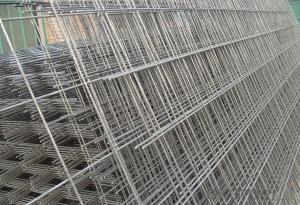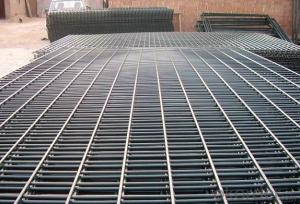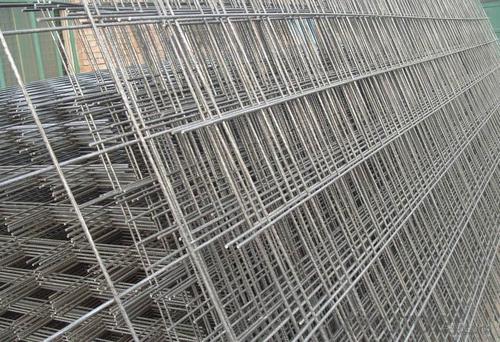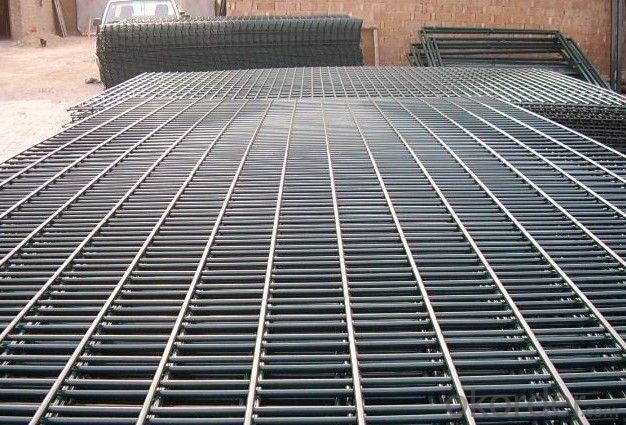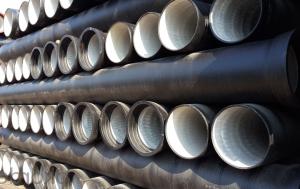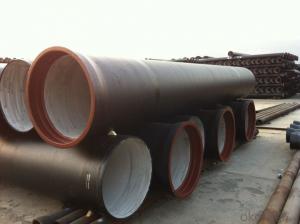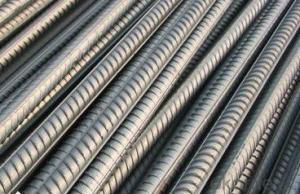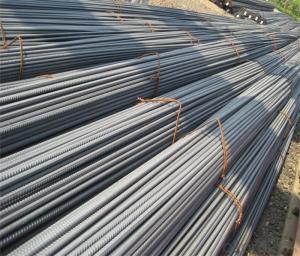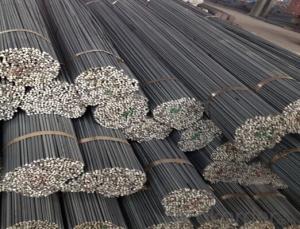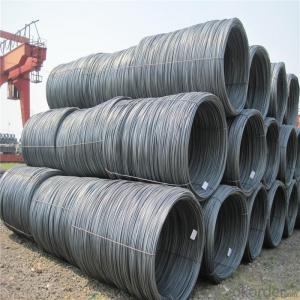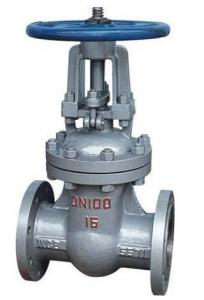High Tensile Steel Fabric ASTM BS4449 Rebar Steel Net
- Loading Port:
- Tianjin
- Payment Terms:
- TT or LC
- Min Order Qty:
- 100 m.t.
- Supply Capability:
- 5000 m.t./month
OKorder Service Pledge
OKorder Financial Service
You Might Also Like
High Tensile Steel Fabric ASTM BS4449 Rebar Steel Net
Structure of High Tensile Steel Fabric:
Type | Deformed steel fabric/ TMT bars | MOQ | 500 MT (Trial order accepted) |
Standard Grade | GB1499.2-2007, HRB335, HRB400, HRB500. BS4449/2005, B500A, B500B etc.. ASTM A615 Gr.40, Gr60, KS, SD400, SD500 and so on.. | ||
Technique | Hot rolled continuous casting | Length | 6, 9,12m, or as requested |
Size | 6mm-32mm | Payment terms | T/T, L/C at sight, Usance L/C |
Packing | In bundle | Inspection | Third party inspection accepted |
Trade terms | EXW, FOB, CFR, CIF | Trans terms | FIO, FILO, FLT |
Delivery time | 15-30 days, according to the quantity | Note | Customized service is available (for sizes,length and chemical components etc.). |
Main Features of Steel Fabric:
HRB335 | Chemical composition | C | Mn | Si | S | P |
0.17-0.25 | 1.0-1.6 | 0.4-0.8 | 0.045 Max. | 0.045 Max. | ||
Mechanical Property | Yield strength | Tensile strength | Elongation | |||
≥335 Mpa | ≥455 Mpa | 17% | ||||
HRB400 | Chemical composition | C | Mn | Si | S | P |
0.17-0.25 | 1.2-1.6 | 0.2-0.8 | 0.045 Max. | 0.045 Max. | ||
Mechanical Property | Yield strength | Tensile strength | Elongation | |||
≥400 Mpa | ≥540 Mpa | 16% | ||||
HRB500 | Chemical composition | C | Mn | Si | S | P |
0.25 Max. | 1.6 Max. | 0.8 Max. | 0.045 Max. | 0.045 Max. | ||
Mechanical Property | Yield strength | Tensile strength | Elongation | |||
≥500 Mpa | ≥630 Mpa | 15% | ||||
Specification and Data for Steel Fabric:
Deformed steel fabric | ||||
Diameter (mm) | Theoretical weight (kg/m) | Pieces/Mt (pcs) | Length (m) | Standard |
6 | 0.222 | 375 | 12 | GB1499-48, HRB335, HRB400, HRB500 BS4449-97, Gr.460B,B500
|
8 | 0.395 | 211 | ||
10 | 0.617 | 135 | ||
12 | 0.888 | 94 | ||
14 | 1.21 | 69 | ||
16 | 1.58 | 53 | ||
18 | 2 | 42 | ||
20 | 2.47 | 34 | ||
22 | 2.98 | 28 | ||
25 | 3.85 | 22 | ||
28 | 4.83 | 17 | ||
32 | 6.31 | 13 | ||
36 | 7.99 | 10 | ||
40 | 9.87 | 8 | ||
50 | 15.42 | 5 | ||
FAQ:
Why choose us:
1. More than 10 years experience in this industry
2. 100,000 tons exporting per month
3. Professional foreign trade team
4. OEM&ODM capacity
5. High quality assured & competitive price
6. Try our best to meet your needs & save your budget
7. Very popular in Southeast Asia, Africa, Mid-East and South America etc.
8. VIP membership system, first time customers and long-term cooperation customers can get extra discount on some products.
Picture:
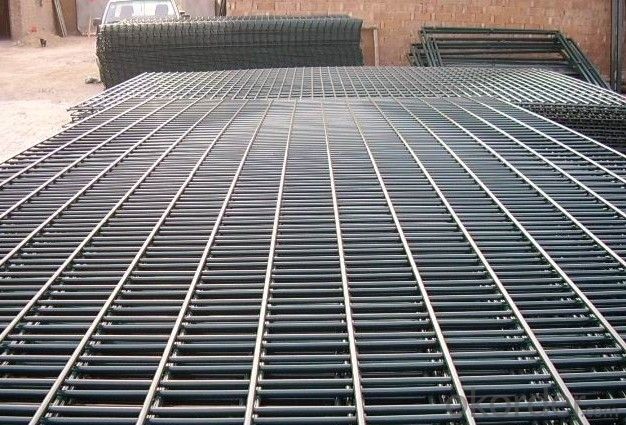

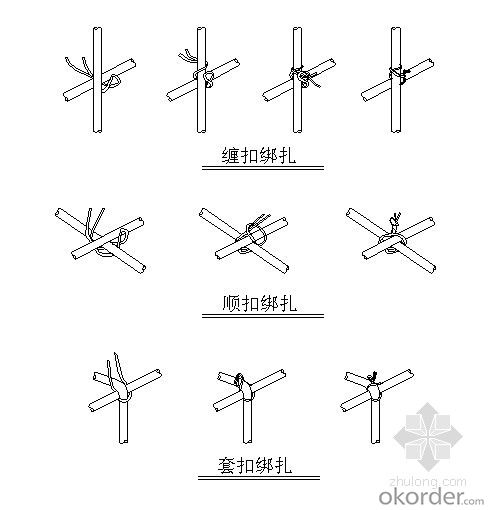
- Q: What are the common pressure ratings for ductile iron pipes?
- The pressure ratings for ductile iron pipes can vary depending on the application and industry standards. However, the most commonly used pressure ratings are Class 150, Class 200, Class 250, and Class 350. For low-pressure applications, Class 150 ductile iron pipes are typically used. These pipes have a working pressure of up to 150 psi and are commonly used for water distribution systems, irrigation, and gravity flow sewer systems. For applications requiring slightly higher pressure, such as industrial water supply and fire protection systems, Class 200 ductile iron pipes are used. These pipes have a working pressure of up to 200 psi. For more demanding applications, Class 250 ductile iron pipes are suitable. These pipes have a working pressure of up to 250 psi and are used for high-pressure water supply systems, power plants, and municipal water distribution networks. For heavy-duty applications, such as industrial water supply and oil and gas pipelines, Class 350 ductile iron pipes are used. These pipes have the highest working pressure rating, with a maximum pressure of up to 350 psi. It is important to note that these pressure ratings are general guidelines and can vary depending on the manufacturer and product specifications. Consulting industry standards and guidelines, as well as working with qualified engineers and professionals, is crucial to ensure the correct pressure rating is selected for a specific ductile iron pipe application.
- Q: Can ductile iron pipes be used for stormwater management systems?
- Yes, ductile iron pipes can be used for stormwater management systems. Ductile iron pipes are known for their strength and durability, making them suitable for various applications including stormwater management. These pipes are resistant to corrosion and can withstand high pressure, making them ideal for carrying stormwater runoff. Additionally, ductile iron pipes have a long lifespan, reducing the need for frequent replacements and maintenance. Overall, ductile iron pipes are a reliable choice for stormwater management systems.
- Q: What are the advantages of cast iron pipes?
- Ductile iron pipe is under high water pressure, can resist the external load change and adapt to the geological conditions, the pipe has the advantages of high strength, good toughness, corrosion resistance, convenient installation, flexible interface, strong shock resistance, low labor intensity, can be applied to the poor geological location and across the road, without additional processing pipe, and then with strong corrosion resistance, and can be applied to coastal saline alkali area. At present, it is widely used in underground pipeline project. Large pipe installation project can reflect the advantages of convenient installation and low labor intensity.
- Q: What is the K9 standard pressure for ductile iron pipes?
- The annealed ductile iron pipe is composed of ferrite and pearlite. The mechanical properties of the ductile iron pipe are better. Ductile iron pipes mainly called centrifugal ductile iron pipe, it has the properties of nature, iron and steel, excellent corrosion resistance, good ductility, good sealing effect, simple installation, mainly for municipal, industrial and mining enterprises, water supply, gas, oil etc.. Water supply pipe is the first choice, with high cost performance. Compared with the PE pipe, from the installation time, ductile pipe PE pipe installation is simple and rapid, and after the installation of internal and external pressure bearing better tightness and corrosion resistance; from the point of view, ductile pipe sealing better after installation, but also can improve the corrosion resistance of corrosion protection through a variety of means; from the hydraulic performance, because ductile pipe specifications generally refers to the inner diameter of PE pipe diameter specifications generally refers to the same specifications, because under the condition of ductile pipe can achieve greater runoff; from the installation and maintenance cost, ductile pipe have more favorable price. The main components of ductile iron pipes are carbon, silicon, manganese, sulfur, phosphorus and magnesium. The inner wall of zinc spray, anti-corrosion materials such as cement mortar.
- Q: Are ductile iron pipes suitable for use in hydroelectric dams?
- Yes, ductile iron pipes are suitable for use in hydroelectric dams. Ductile iron is a type of iron that has a higher degree of flexibility and strength compared to traditional cast iron. This makes it an ideal choice for many applications, including water transmission systems in hydroelectric dams. Ductile iron pipes are known for their durability and resistance to corrosion, which is crucial in a dam environment where water exposure is constant. They can withstand high pressures and extreme temperatures, making them suitable for the demanding conditions found within hydroelectric dams. Additionally, ductile iron pipes have excellent joint integrity, ensuring that they remain leak-proof and reliable over their lifespan. This is important for maintaining the efficiency and effectiveness of a hydroelectric dam's water transmission system. Furthermore, ductile iron pipes are cost-effective compared to other materials, such as steel or concrete. They have a long service life, require minimal maintenance, and are readily available, making them a practical choice for hydroelectric dam projects. In conclusion, ductile iron pipes are a suitable choice for use in hydroelectric dams due to their durability, resistance to corrosion, high-pressure tolerance, joint integrity, and cost-effectiveness. They provide the necessary strength and flexibility to efficiently transport water within the dam, contributing to the overall success and longevity of the hydroelectric power generation system.
- Q: Can ductile iron pipe be used for cooling water systems?
- Certainly, cooling water systems can utilize ductile iron pipe. With its exceptional corrosion resistance, remarkable tensile strength, and ability to withstand high-pressure scenarios, ductile iron pipe proves itself suitable for a range of applications, including cooling water systems. Its durability and versatility ensure the efficient transportation and distribution of cooling water, eliminating the likelihood of leakage or malfunction. Moreover, ductile iron pipe is renowned for its extended lifespan and minimal upkeep demands, rendering it an economically sound option for cooling water systems.
- Q: What material is ductile cast iron 235A?
- Nodular cast iron by spheroidization and inoculation by spherical graphite, effectively improve the mechanical properties of cast iron, especially the plasticity and toughness increased, resulting in higher than carbon steel. The strength of nodular cast iron is a kind of high strength cast iron material developed in 50s twentieth Century, its comprehensive performance is close to the steel. It is based on its excellent performance, has been successfully used in casting complex stress, strength, toughness and wear resistance requirements of the higher parts. Ductile iron has been the rapid development of cast iron material for application of gray cast iron, only very widely. The so-called "iron steel", mainly refers to the ductile iron.
- Q: What are the different types of linings available for ductile iron pipe?
- Ductile iron pipes offer various linings with distinct advantages and applications. 1. Cement mortar lining: The most commonly used lining for ductile iron pipes is cement mortar. It involves applying a layer of cement mortar to the pipe's interior surface. This lining excels in resisting corrosion and chemical attacks, making it suitable for potable water distribution, wastewater conveyance, and industrial pipelines. Additionally, it improves flow efficiency by reducing friction and turbulence within the pipe. 2. Polyethylene lining: Ductile iron pipes often utilize polyethylene linings when corrosion resistance is a primary concern. This lining consists of a layer of high-density polyethylene (HDPE), either extruded or sprayed onto the inner surface of the pipe. Polyethylene lining provides exceptional resistance to corrosion, abrasion, and chemical attacks, making it ideal for transporting aggressive fluids such as saltwater, chemicals, or industrial waste. 3. Polyurethane lining: For applications requiring protection against abrasive wear, polyurethane linings are commonly employed in ductile iron pipes. This lining is created by spraying or pouring a layer of polyurethane onto the inner surface of the pipe. Polyurethane lining offers excellent resistance to abrasion, impact, and chemical attacks. It is suitable for conveying abrasive slurries, mining applications, and other high-wear environments. 4. Epoxy lining: To safeguard against corrosion and chemical attacks, epoxy linings are applied to ductile iron pipes. This lining is typically formed by applying a layer of epoxy resin to the pipe's inner surface using centrifugal casting or electrostatic spraying. Epoxy lining demonstrates outstanding adhesion and corrosion resistance, making it suitable for various applications like potable water distribution, wastewater treatment, and industrial pipelines. 5. Zinc lining: Ductile iron pipes employ zinc linings to provide cathodic protection against corrosion. This lining involves applying a layer of zinc to the pipe's inner surface through hot-dip galvanizing or electroplating. Zinc lining acts as a sacrificial anode, corroding preferentially to the iron pipe and shielding it from corrosion. It is commonly used in highly corrosive environments like seawater or acidic soils. Ultimately, the selection of a lining for ductile iron pipes relies on the specific requirements of the application, including the transported fluid, desired corrosion resistance, and potential for abrasive wear. Seeking guidance from industry experts and considering factors like cost, longevity, and maintenance requirements aids in determining the most suitable lining option for a particular project.
- Q: What is the DN400 installation charge for ductile iron pipes?
- 1. hourly wage or piece wage: refers to the hourly wage and work hours or the work done by the unit price to pay individual labor remuneration.2. prize: refers to the excess labor and increase revenue of remuneration paid to individuals. Such as saving prize, labor competition prize, etc..3. subsidy: refers to compensate workers special or extra labor and other special reasons for the subsidies paid to individuals, and in order to ensure that the impact of inflation on real wages paid to individual price subsidies. Such as mobile construction allowance, special area construction allowance, high temperature (cold) operation, temporary allowance, aerial allowance and so on.
- Q: Do ductile iron pipes require external protection against stray electrical currents?
- Yes, ductile iron pipes do require external protection against stray electrical currents. Stray electrical currents can cause corrosion to the pipe, leading to premature failure and potential leaks. To protect against this, external coatings or wraps are applied to the ductile iron pipes to provide a barrier between the pipe and the electrical currents. This protection helps to ensure the longevity and reliability of the pipes, preventing costly repairs and potential safety hazards.
Send your message to us
High Tensile Steel Fabric ASTM BS4449 Rebar Steel Net
- Loading Port:
- Tianjin
- Payment Terms:
- TT or LC
- Min Order Qty:
- 100 m.t.
- Supply Capability:
- 5000 m.t./month
OKorder Service Pledge
OKorder Financial Service
Similar products
Hot products
Hot Searches
Related keywords
